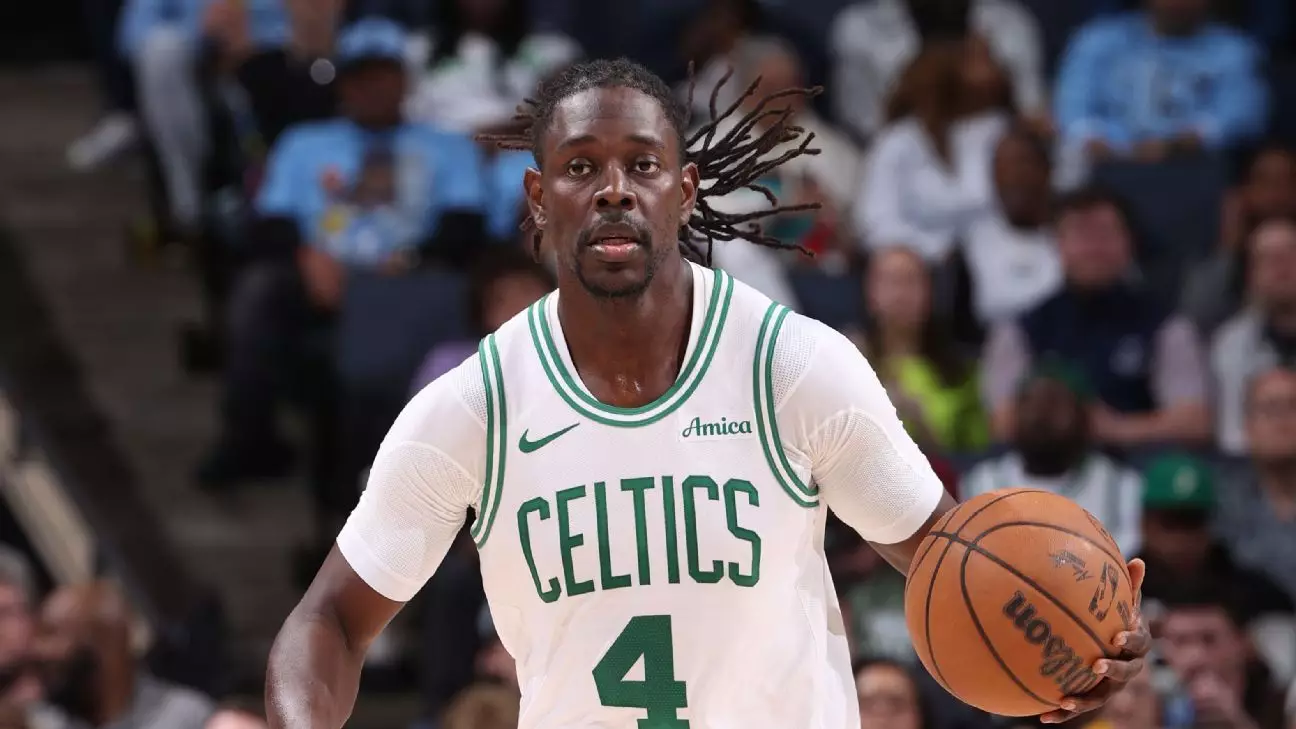In a compelling twist within the NBA’s intricate web of trades, the Boston Celtics have opted to send Jrue Holiday back to the Portland Trail Blazers, yielding Anfernee Simons alongside two second-round picks. This transaction, reported by ESPN on Monday, not only signals an intriguing shift in team dynamics but also highlights the relentless nature of teams as they adjust their line-ups ahead of an eager offseason. The Celtics, seemingly aware of their current standing and future potential, are clearly not holding back in their efforts to shape a new identity post the recent injury to star player Jayson Tatum.
The Celtics’ decision to part ways with Holiday—who has been pivotal in their recent championship run—might come as a shock to some fans. Holiday, now heading into his 17th season, showcased an impressive performance with shooting splits that earned him a spot on the All-Defensive team. However, financial strategy seems to drive this decision. By trading Holiday, the Celtics are primed to save approximately $40 million in luxury tax payments for the upcoming season, a smart move in an era where financial flexibility is paramount.
Evaluating Portland’s Aggressive Acquisition
On the other side, the Portland Trail Blazers’ pursuit of Holiday paints a picture of a franchise seeking stability and experience amidst a youth-oriented roster. After originally swapping him for Malcolm Brogdon and other assets, Portland has undoubtedly recognized the value of Holiday’s veteran presence. His defensive prowess and proven playoff experience bring a sense of maturity that can greatly benefit the team’s developing core, especially as they navigate the tumultuous waters of rebuilding.
What makes this trade even more intriguing is the fact that Holiday can significantly bolster Portland’s defense. A recent statistic indicated that from January 19 onward, Portland boasted a commendable 23-18 record, emerging as one of the league’s premier defensive teams. Adding Holiday back into the mix is not just a strategic move but a calculated gamble that could set the Blazers up for early success next season.
Simons’ Potential: A New Era for the Celtics
For the Celtics, bringing in Anfernee Simons offers a fresh and promising perspective. The 26-year-old guard, relatively young and adaptable, fits seamlessly into the Celtics’ game plan centered around three-point shooting—an approach emphasized by head coach Joe Mazzulla. Over the past three seasons, Simons has averaged nearly nine three-point attempts per game, a skill set that should resonate well in Boston’s high-octane offense.
Despite being on an expiring contract, Simons embodies a lucrative opportunity for the Celtics to explore. He provides invaluable scoring ability while also allowing the team to maintain flexibility moving forward. The coming season looks to be a transformative one for Boston, as they work through injuries and the complexities of retooling their roster.
The Bigger Picture: Implications for the Future
This trade marks the beginning of what promises to be a pivotal offseason for both franchises. The Celtics are clearly in a re-evaluation phase, balancing the need for immediate impact against future aspirations in light of Tatum’s injury. Meanwhile, Portland is embracing a bold strategy to utilize their resources effectively in order to create a competitive edge.
As both teams gear up for the upcoming season, the effects of these trades will resonate far beyond immediate outcomes, potentially altering the competitive landscape in the NBA for years to come. Each franchise appears to be writing the next chapter in their journey—one driven by calculated risk, strategic foresight, and the ever-evolving dynamics of basketball.

